Carreg Cennen Castle sits high on a remote rocky limestone crag in Carmarthenshire, Wales. Located approximately four miles southeast of the small town of Llandeilo, the castle is perched almost 300 feet (90m) above the River Cennen giving impressive views of the rolling Welsh countryside.
| Built | 12th Century |
| Condition | Ruinous |
| Ownership | Private but maintained by Cadw |
| Access | Public – Admission Fee |
| Postcode | SA19 6UA |
Click here to watch our video exploring Carreg Cennen Castle and discover its history
Early settlements
Archaeological digs in the area have uncovered artefacts suggesting that the crag may have been a site of a prehistoric hill fort during the Early Middle Ages, and that the Romans may have also had a presence in the area during their invasion of Britain.
Origins
The area of Carreg Cennen was the administrative centre of the Welsh kingdom of Deheubarth in the 1100s, with the royal seat being located at Dinefwr castle just a couple of miles away.
The original castle was built in the second half of the 12th century, possibly by Rhys ap Gruffudd (The Lord Rhys), the ruler of the Welsh Kingdom of Deheubarth. In 1248 his grand-daughter Matilda de Braose granted the castle to the Normans but before the English could occupy the stronghold the Welsh Prince Rhys Fychan took control. The next 30 years saw many changes in ownership of the castle due to family conflicts between Rhys and his uncle Maredudd as they fought for the reign of the Kingdom of Deheubarth.

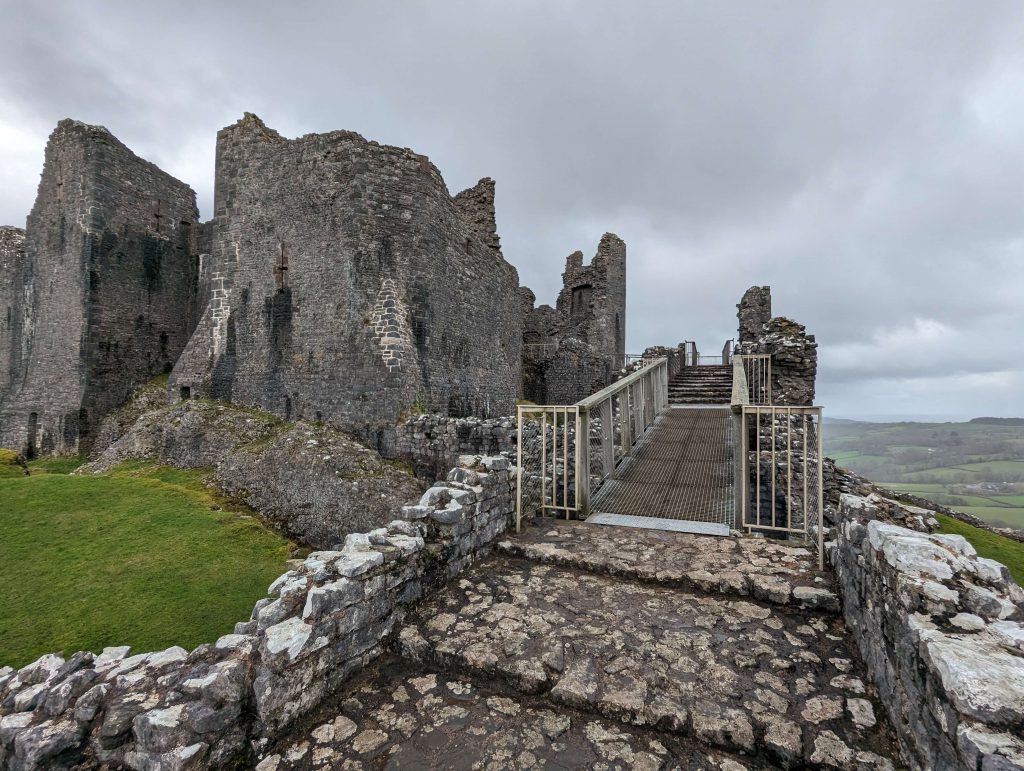
The Welsh-English war broke out in 1276 between King Edward I and Llywelyn ap Gruffudd (Llywelyn the Last), Prince of Wales and in 1277 the castle was captured by the English under the command of Payn de Chaworth, Lord of Kidwelly. In 1282 the castle was retaken by the sons of the Welsh Prince Rhys Fychan, Gruffudd and Llywelyn, but this turned out to be short-lived as royal forces soon recaptured the castle with an English garrison deployed.
The following year the war ended and Edward granted the castle to the military commander John Giffard, 1st Baron Giffard, as reward for his services. John had been heavily involved in the Second Barons’ War as well as the encounter where Llywelyn ap Gruffudd was killed.
Reconstruction
John Giffard was likely responsible for the extensive rebuilding and remodelling of the castle in which we see the ruins of today. This was likely funded by himself as there is no evidence of any financial assistance from the Crown for Carreg Cennen. The work likely started sometime after 1284 and was completed in the early 14th century by his son, also called John after the death of his father in 1299.
It is interesting to note that the castle was likely constructed in multiple phases, and these phases could have come in quick succession. The oldest part is the inner ward and it is possible that some of the masonry of the earlier Welsh stronghold survives in the South curtain. The Barbican was built later against the front of the gatehouse of the Inner Ward, and finally, the outer ward was added, extending down the Crag to the North and East.
During this time, the castle was briefly captured by Rhys ap Maredudd during a widespread Welsh uprising but this did not last long and was soon back in the hands of the Giffard family
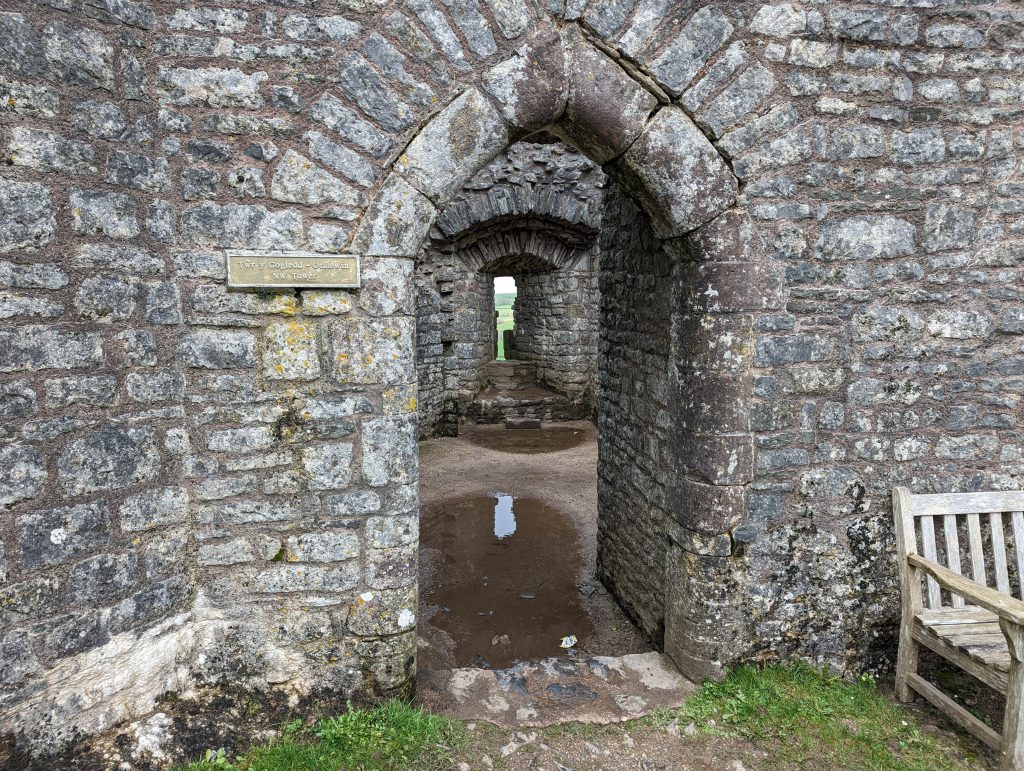
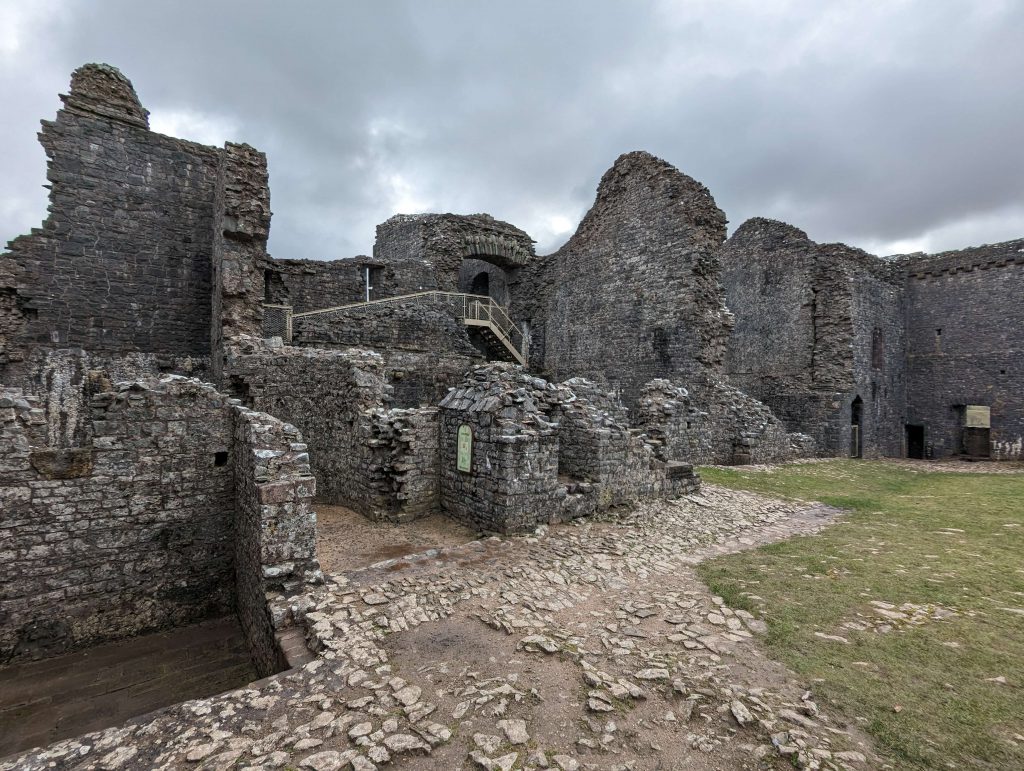
The Giffard family remained in the castle until 1322, it was taken away from them by Edward II following the involvement of John, 2nd Baron Giffard in the civil war. John was executed and the castle was given to Hugh le Despenser.
Hugh was one of the king’s favourites, but fortunes soon changed and Hugh was tried and executed for being a thief and traitor (discover more about Hugh’s dastardly deeds in our Cardiff Castle History). After this the castle passed through several different hands, until in 1362 it became the property of John of Gaunt, Duke of Lancaster. Building accounts from 1369-70 show that significant repair work was required for the castle. Carreg Cennen passed on to John of Gaunt’s son, Henry Bolingbroke, who was crowned King Henry IV in 1399, and the castle was then under the ownership of the Crown.
Welsh Uprising
In 1400 the Welsh uprising broke out under Owain Glyndŵr. By this time the castle’s stronghold was being managed by John Skidmore on behalf of the king. In 1403 and when the uprising had covered most of Wales, an 800 man force attacked the castle. The attack was repelled but that then led onto a siege lasting several months which eventually led to Skidmore being forced to surrender the castle.
The castle sustained a significant amount of damage due to the conflict, but this was later repaired. Between 1414 and 1421, £500 was spent on restoring the castle, a massive sum of money at the time. The funds were spent on repairing and improving the walls, gates, bridges, chambers, the chapel and other domestic structures.


War of the Roses
The castle’s final battle came during the War of the Roses (1455-85). It became a Lancastrian stronghold with a garrison under the command of Gruffud ap Nicholas. It is likely that it was at this point that the gun-port for musket fire was inserted in the north-west tower. Following the Lancastrians’ defeat in 1461 at the Battle of Mortimer’s Cross, Gruffudd’s sons were forced to surrender the castle to the Yorkist King, Edward IV in 1462.
To prevent enemies from re-capturing the castle, the Yorkists demolished it which took a team of 500 men four months to complete. After this the castle was never repaired and was left to deteriorate resulting in the ruined remains we see today.
Carreg Cennen Castle Layout
The Outer Ward
Carreg Cennen’s outer ward consisted of an outer gate, lime-kiln and angled barbican. Other buildings that are no longer visible would have included a smithy, stables and workshops. The impressive barbican made it very hazardous to reach the gatehouse and was heavily defended by two pivoting drawbridges, with each drawbridge controlled by a tower.
The Inner Ward
A three-storey twin-towered gatehouse protected the inner ward entrance. The gatehouse also acted as the castle’s keep so defending it was crucial. The gatehouses’ octagonal tower bases were strengthened by spur buttresses to prevent undermining. It was also well protected by a drawbridge pivoted between two pits, flanking towers with arrowloops and a portcullis and heavy wooden door at each end of the entrance passage.


Within the inner ward you would have found a range of domestic buildings, curtain walls, a chapel, an oven, the north west and north east towers, private chambers and hall. The hall was approached via an external stairwell from the courtyard, inside a central open fire supported on a masonry pillar. The hall was the most important room, it would have been used for entertaining guests, ceremonial occasions and official business.
An intriguing and rather mysterious feature at Carreg Cennen Castle is the limestone cave in the south east corner of the inner ward. Steep steps lead far beneath the castle to the cave with its connected vaulted passageway which was lined with stone. The pigeon holes built into the wall indicate it was used as a dovecote.
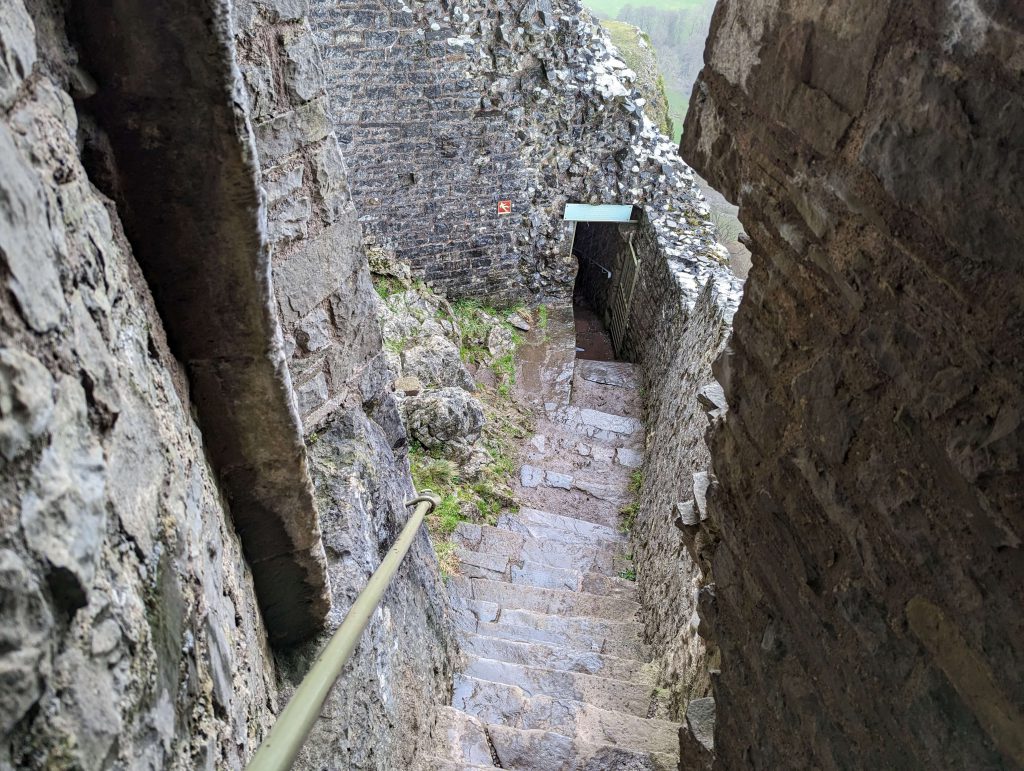

Originally the mouth of the cave was exposed to the outside, putting the castle at risk of being infiltrated by the enemy. This was deliberately obstructed from within, successfully preventing any outside attempts to gain access. Lining the passage with stone would have helped prevent undermining by an enemy and reinforced the passageway so that heavy structures could be built on top.
The cave is also supposedly haunted and is sometimes known as Owain Llawgoch’s Cave. Owain was a 14th century Welsh soldier who led a French battalion in the Hundred Years War against the English. According to legend, he and 51 other men are believed to be sleeping somewhere within the cave system. It is said that when they awaken, peace will reign across all of Earth.
Today
The Earls of Cawdor owned Carreg Cennen in the 19th and for much of the 20th century until a mishap led to the ownership of the castle being passed on. In the 1960’s, Gwilim Morris & family of Castell Farm acquired the castle when Lord Cawdor’s legal team made a mistake in the deeds of the farm and included the castle. Today the castle is maintained by Cadw (the historic environment service of the Welsh Government) but is privately owned. It is open to the public to visit for a small entry fee.
Click below to explore Carreg Cennen Castle with us

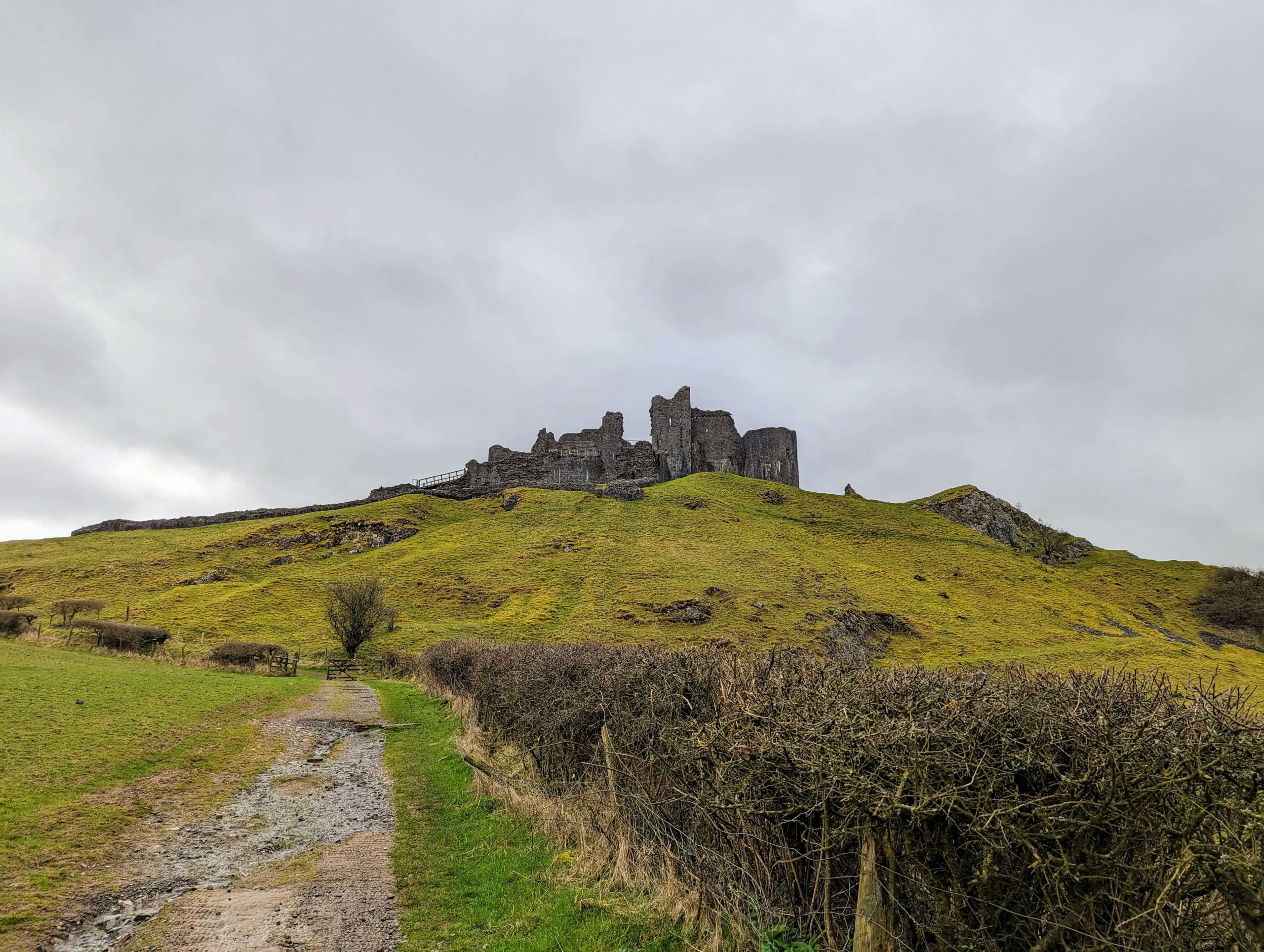
Admission to the actual castle is NOT free. £6.50
Yes, the admission fee is currently £6.50 (for a standard adult) but this could alter in time so I would advise to always check the castle’s website for the exact fee.